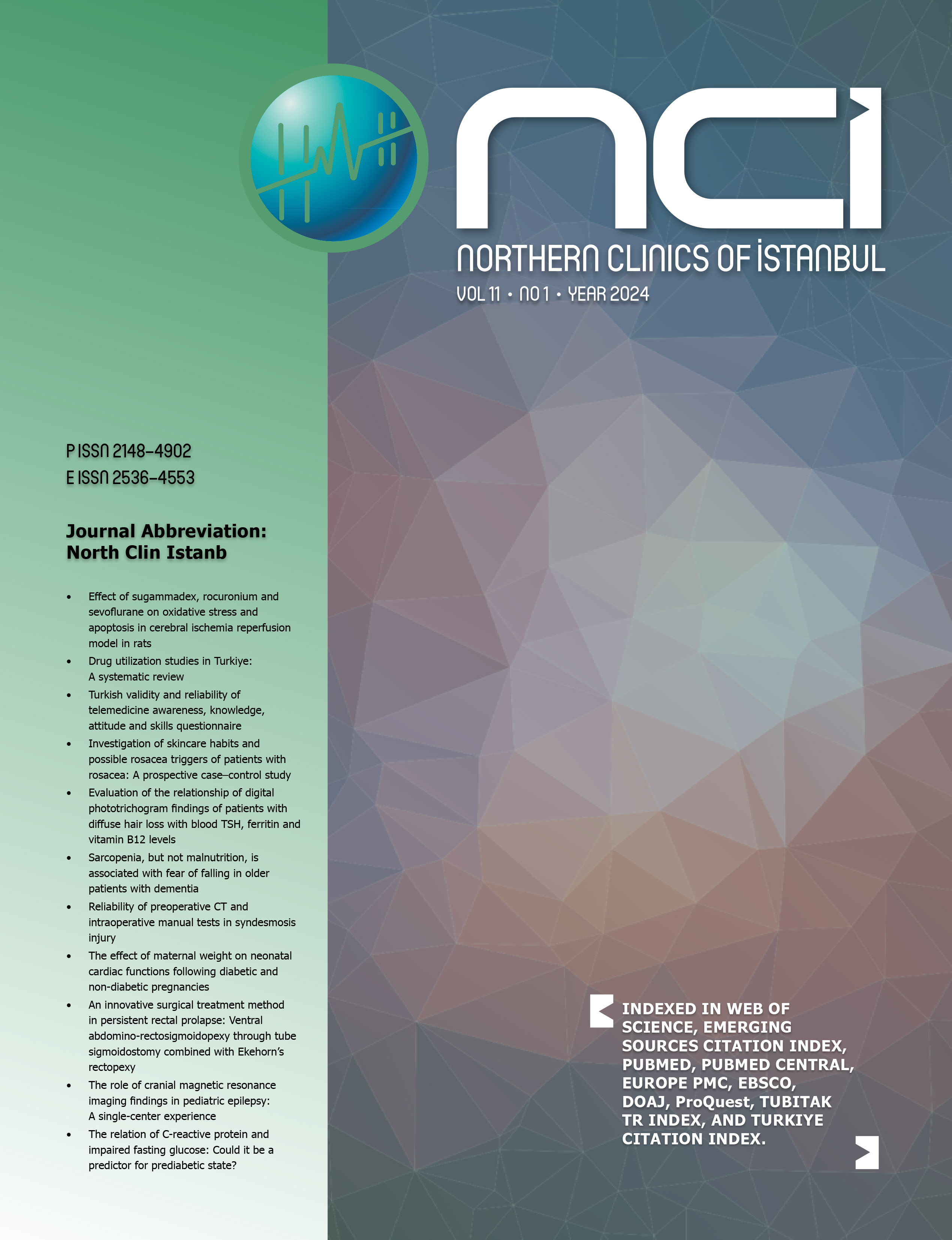Association of monocyte to high-density lipoprotein ratio with bare-metal stent restenosis in STEMI patients treated with primary PCI
İlhan İlker Avcı1, İrfan Şahin2, Barış Güngör1, Mehmet Baran Karataş1, Kazim Serhan Özcan3, Yiğit Çanga1, Muhammet Keskin1, Mert Hayıroğlu1, Fatma Özpamuk Karadeniz4, Aylin Sungur51Department of Cardiology, University of Health Sciences, Dr. Siyami Ersek Training and Research Hospital, Istanbul, Turkey2Department of Cardiology, University of Health Sciences, Bağcılar Training and Research Hospital, Istanbul, Turkey
3Department of Cardiology, Derince Training and Research Hospital, Kocaeli, Turkey
4Department of Cardiology, Erzurum Training and Research Hospital, Erzurum, Turkey
5Department of Cardiology, Kahramanmaras Necip Fazil State Hospital, Kahramanmaras, Turkey
OBJECTIVE: Monocyte to high-density lipoprotein ratio (MHR) has recently been postulated as a novel parameter related to adverse cardiovascular outcomes. In this study, we aimed to investigate the correlation of MHR with stent restenosis (SR) rates after the primary percutaneous coronary intervention (PCI) and bare-metal stent (BMS) implantation.
METHODS: In this study, patients who had undergone primary PCI for STEMI and had a control angiogram during follow-up were retrospectively recruited. Patients were categorized according to admission MHR tertiles, clinical and angiographic data were compared. In addition, predictors of SR were evaluated with logistic regression analysis.
RESULTS: A total number of 448 patients (240 patients with SR and 208 patients without SR) were included in this study. Patients were categorized into three groups according to tertiles of admission MHR. During a follow-up period of median 12 months, the rate of SR was significantly higher in patients with higher MHR levels (45% in tertile 1, 54% in tertile 2 and 62% in tertile 3, p<0.01). In multivariate Cox regression analysis, male gender, stent length, admission NLR levels and MHR levels (HR 1.03, 95% CI 1.021.06, p<0.01) remained as the independent predictors of SR in the study population.
CONCLUSION: Gender, stent length, higher MHR and NLR levels are correlated to SR after primary PCI.
Manuscript Language: English





















